More than 100 people remain missing in northern Pakistan after flash floods have killed at least 360 across the country and Pakistan-administered Kashmir since Friday.
Most of the victims have been in the mountainous Khyber Pakhtunkhwa province in the northwest, where entire villages have been swept away as swollen rivers, mudslides and collapsing homes left families buried beneath debris. Authorities have warned of more deluges and possible landslides and urged local administrations to remain on alert.
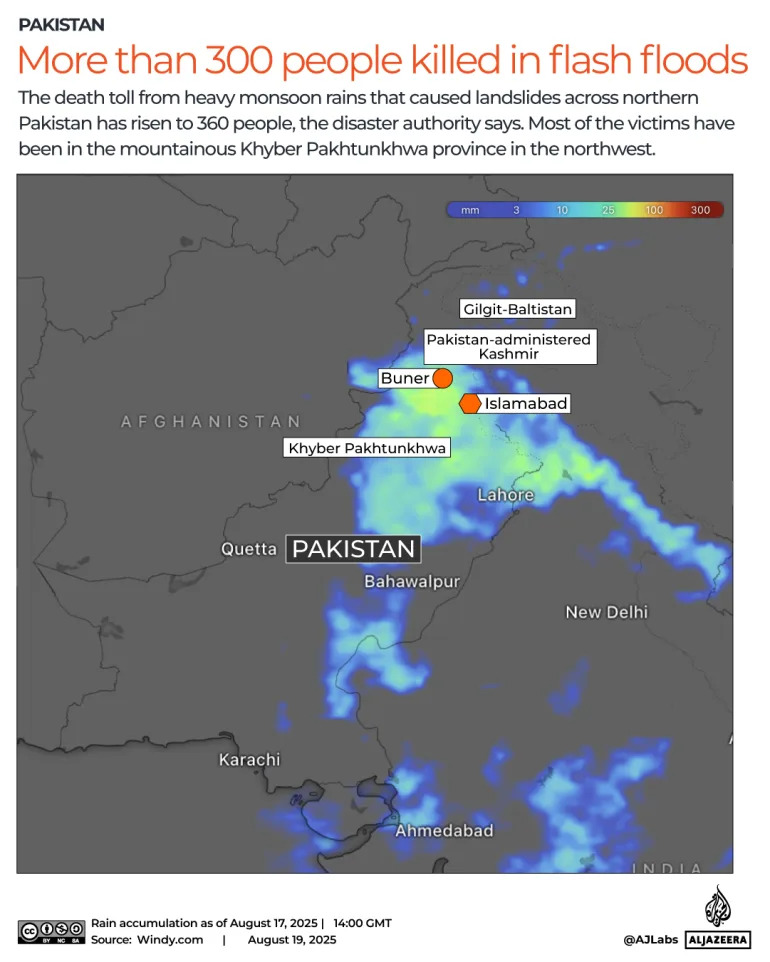
Floods in Buner kill more than 200 people
In Buner, a district in Khyber Pakhtunkhwa about 100km (62 miles) northwest of the capital, Islamabad, at least 207 people have been killed over two days as floods and landslides swept through villages and destroyed homes.
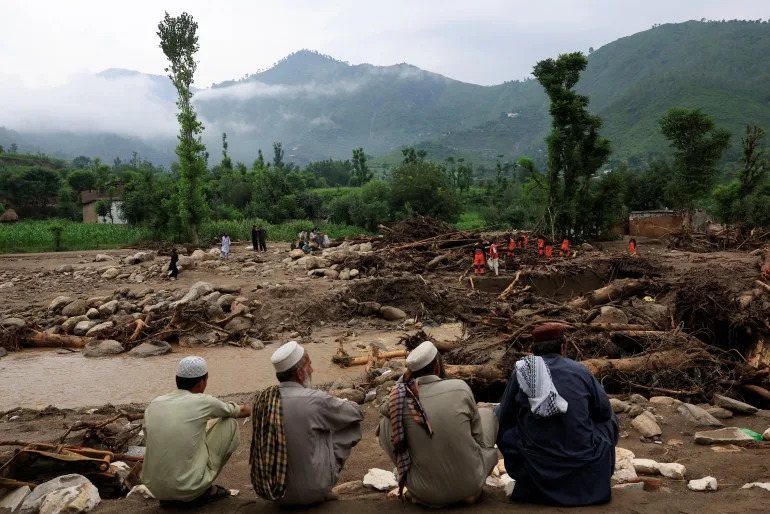
Buner is predominantly hilly with steep slopes that feed into narrow valleys. The district’s loose, erosion-prone soil coupled with deforestation makes it vulnerable to landslides and flash floods.
Satellite images of Buner show mountains and surrounding villages, including the town of Pir Baba, engulfed in mud and debris after the floods.
What is a cloudburst?
Officials said Buner was hit by a cloudburst, a rare phenomenon in which more than 100mm (4 inches) of rain falls within an hour in a small area. In Buner, there was more than 150mm (6 inches) of rain within an hour on Friday morning.
Cloudbursts typically occur in mountainous regions during the monsoon season when weather conditions can produce sudden, localised downpours leading to landslides.
Cloudbursts tend to occur over a small area of 20 to 30sq km (7.7 to 11.6sq miles) and are often accompanied by thunder, lightning and sometimes hail.
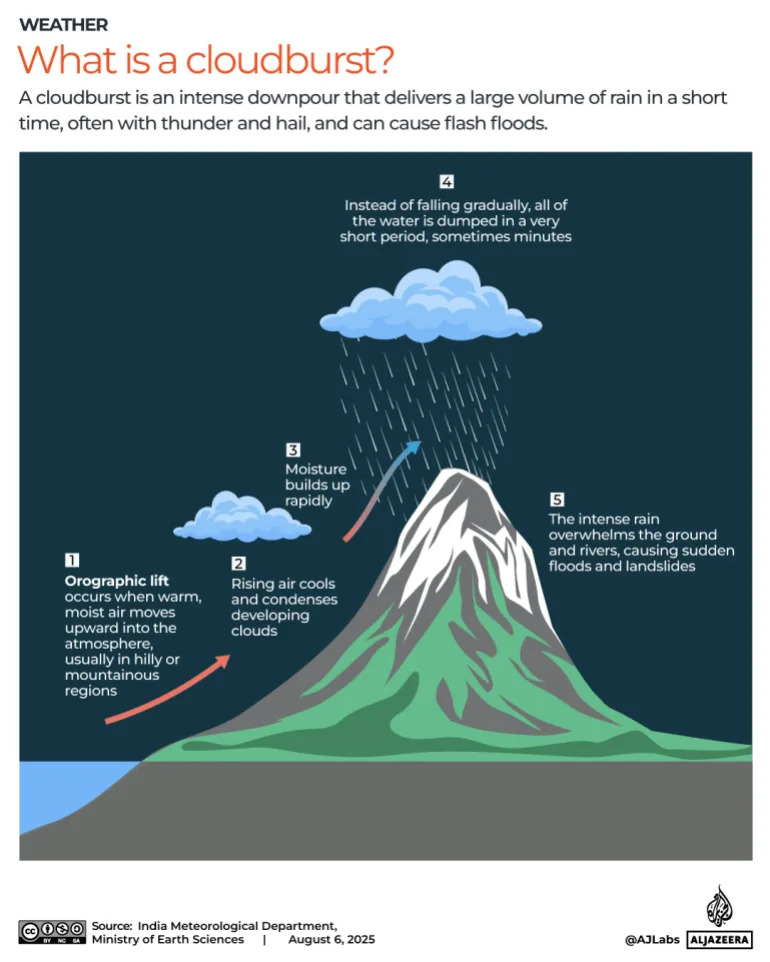
Aziz Ahmed, a schoolteacher in Buner, said the thunder accompanying recent torrential rains was so loud he thought the “end of the world had come”.
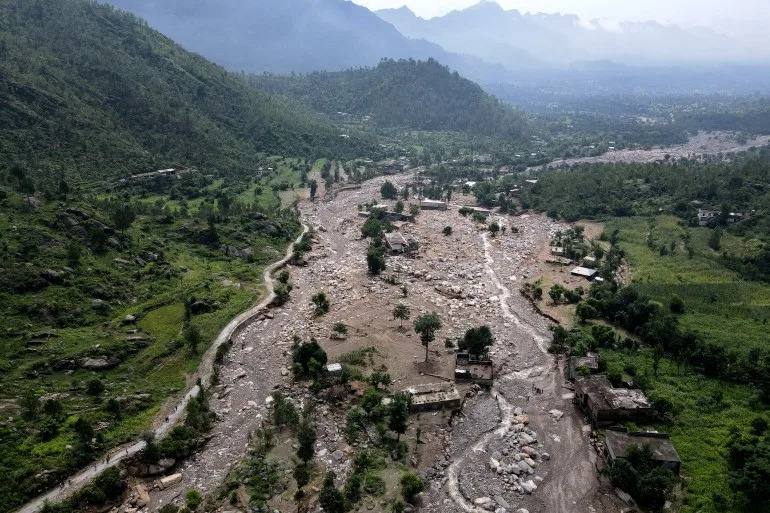
Search efforts focused on areas where homes were flattened by torrents of water that swept down from the mountains, carrying massive boulders that smashed into houses like explosions.
“You can say that those who survived have gone mad,” said Ahmed, pointing to a house where just one family member still lived.
Pakistan’s destructive monsoon season
In Pakistan, the monsoon season typically runs from July to September with peak rainfall usually occurring in August.
Since late June, torrential monsoon rains have battered Pakistan, triggering landslides and flash floods that have killed more than 650 people and injured nearly 1,000, according to officials.
Lieutenant General Inam Haider Malik, the chairman of the National Disaster Management Authority, said at a news conference in Islamabad that Pakistan was experiencing shifting weather patterns because of climate change.
“The intensity of this year’s monsoon is around 50 to 60 percent more than last year,” Haider said.
The worst-hit province is Khyber Pakhtunkhwa, where 425 deaths have been recorded, followed by 164 in Punjab.
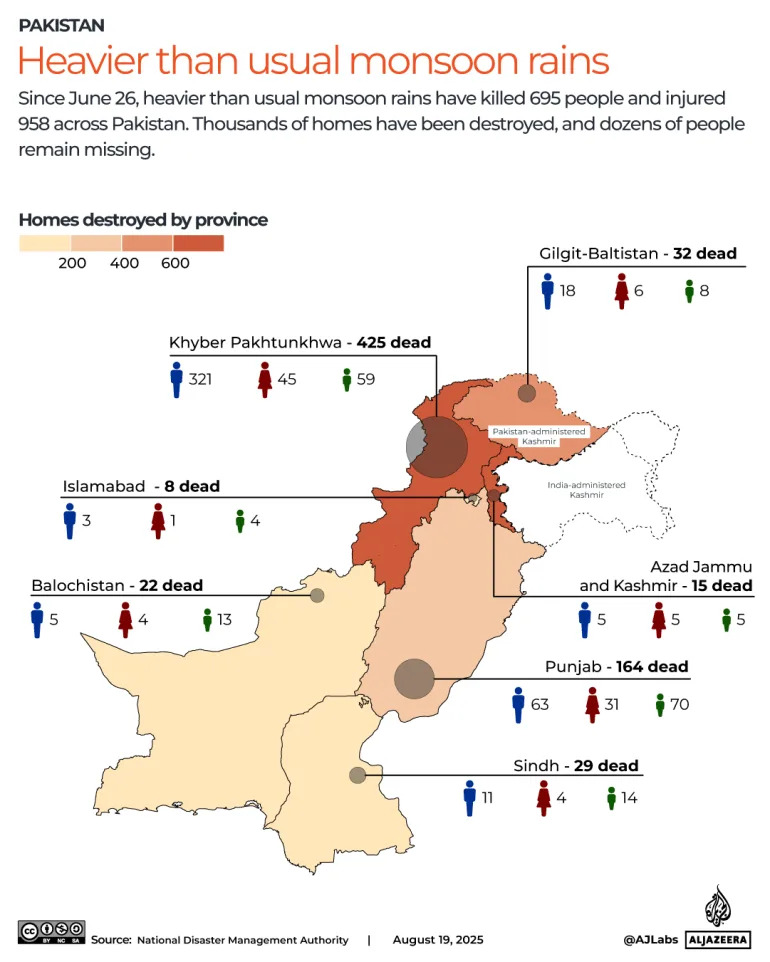
More than half of the fatalities were caused by flash floods while about a third resulted from house collapses.
Housing damage has also been severe: 941 in Khyber Pakhtunkhwa and 719 in Azad Jammu and Kashmir were reported destroyed or damaged, highlighting the scale of destruction to shelter and infrastructure. In total, 2,707 homes have been damaged.
Early warning system
Angry residents in Buner accused officials of failing to warn them to evacuate. There was no warning broadcast from mosque loudspeakers, a traditional method in remote areas.
The government said that while an early warning system was in place, the sudden downpour in Buner was so intense that the deluge struck before residents could be alerted.
Pakistan prone to natural disasters
Pakistan is among the world’s most climate-vulnerable countries and grapples with extreme weather that is becoming more frequent and more intense.
Although it produces less than 1 percent of global greenhouse gas emissions, the country faces recurring heatwaves, heavy rains, glacial lake outburst floods and sudden cloudbursts that can devastate communities within hours.
Flash floods and landslides are a regular feature of the monsoon season, especially in the rugged northwest, where villages sit on steep slopes and riverbanks.
In 2022, Pakistan endured its worst monsoon season on record, which killed more than 1,700 people and caused an estimated $40bn in damage. Twelve years earlier, similar floods killed more than 1,700 and affected at least 20 million people, according to official data.

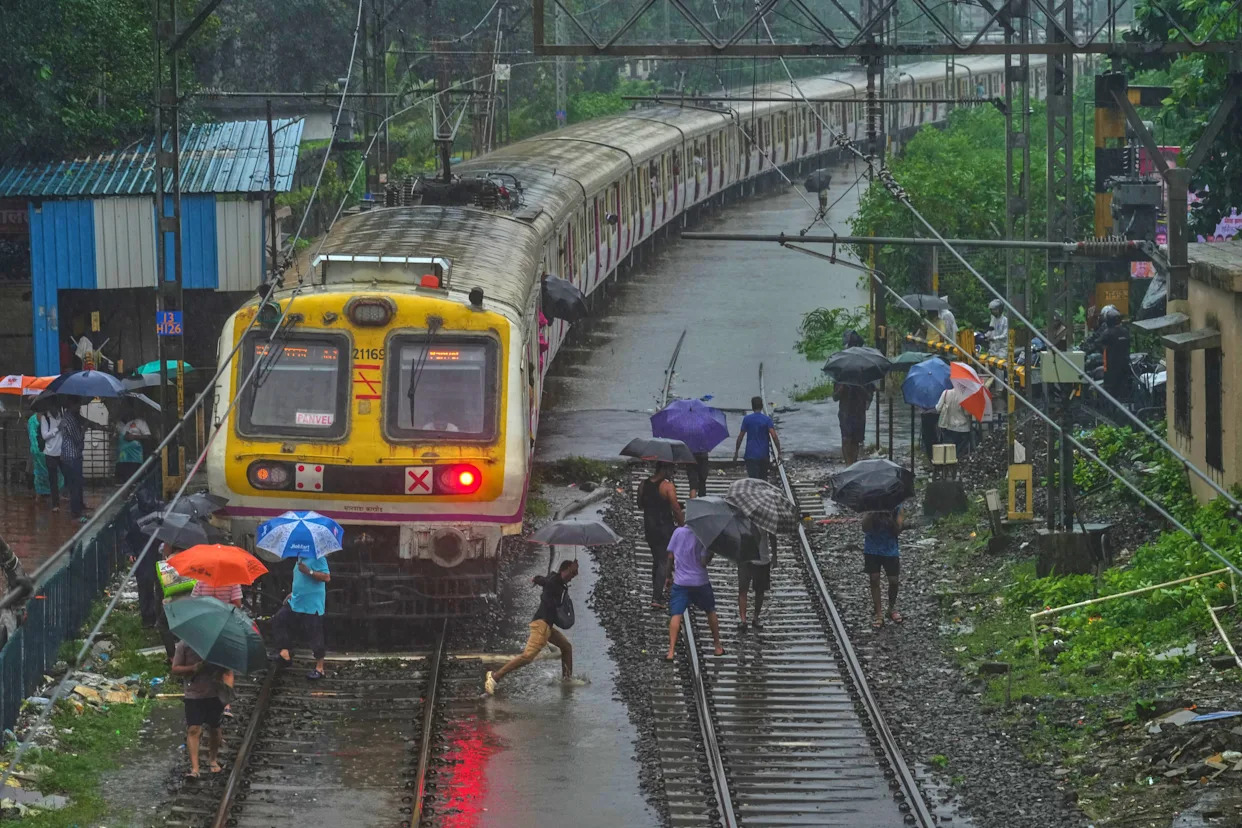




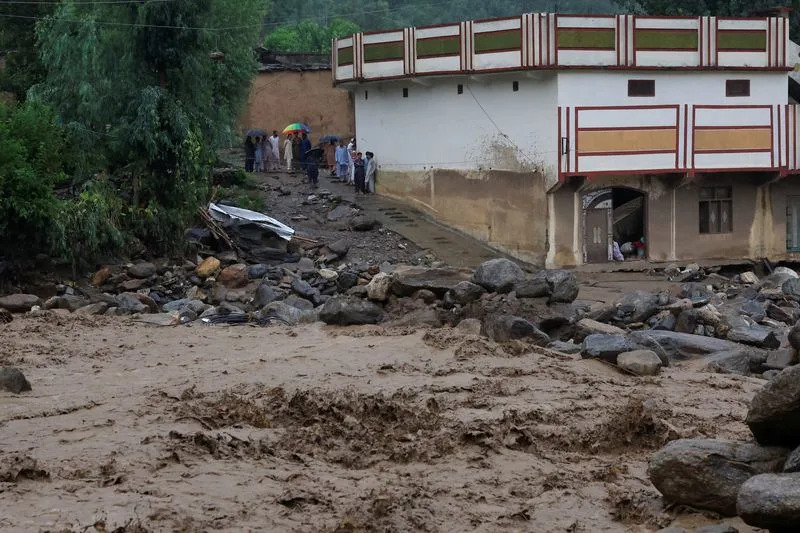
Comments